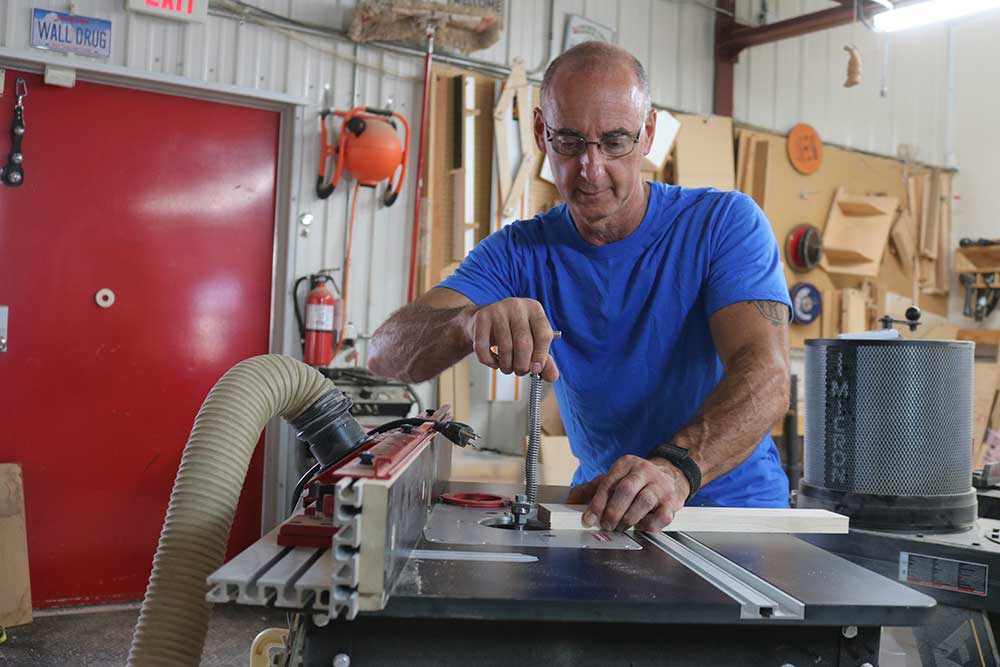
Determine the Ideal Depth for Any Dado Cut
George VondriskaDadoes provide an excellent way to join cabinet sides to shelves, but in order for the joint to be strong the dado cut needs to be right. There are two common conventions for determining the depth of a dado cut, and we’ll explain them here.
Why a dado?
Dadoes are significantly stronger than a butt joint, thanks to way a dado completely houses the mating piece. Not only do you get a mechanical advantage between the two pieces, you also increase the glue area, a lot, making for a very strong joint that works great for cabinets, and boxes in general.
Tooling
The table saw, paired with a dado head, is one of the easiest ways to cut accurate dadoes. There are both 6” and 8” dado heads on the market. You need a little background information to determine which size of dado head is right for you, your shop, and your table saw.
More about dadoes
When you’re ready to cut dadoes you need to know more than simply how deep to make them. You need to understand how to set up a stackable dado head, when to use dado shims, and how to determine if you’re getting the correct fit. No problem. WoodWorkers Guild of America has a great tutorial on cutting dadoes.
You may also be interested in:
Let's talk about dado's daddy on some rules of thumb for getting dado's to the right depth. So there's two pretty common approaches to this. One is to make your dado's one third the thickness of your material, another concept is to make them one half the thickness of your material. Now, how do you choose? Well, here's the deal.
Let's do a little drawing here and see what's happening. Let's go into the one half side first. So there's my cabinet wall. There's my dado. One half the thickness.
I'm going to put a shelf into that dado and it's going to look something like that. If you can go half the thickness, that would be my recommendation because we're going to get more shelf inside the dado. A little bit more room for glue in there. Everything is going to be a little bit more rigid. Now you might say, well, why don't we just go ahead and do this all the time?
And here's the problem with one half. Sometimes when we build a cabinet, especially a really long cabinet, we got your top and we got your bottom and we got an end and I'm not doing any joinery out here. We're just drawing lines, but there would be joinery. Now the cabinet is so big that I can't span all of that with one shelf, 'cause it would sag in the middle. So what we're going to do is put a center partition in there.
Now, if I have a fixed shelf, or two fixed shelves, going into this partition, this is where the half becomes a problem. Let's expand that a little bit. Here's our center partition. And we cut in half way And we cut in half way. Then there's no meat left in the middle.
What we've effectively done is cut all the way through the piece. Some people call these partitions a party wall because it's shared with both sides of the cabinet. Sounds like more fun than it really is. So when we've got a party wall, when we've got a center partition, that's going to have shelves dado'd in from both sides, then you want to go to that one third the thickness rule. So in real numbers here, 'cause we're kind of only working with three quarter inch material for cabinetry, one-third the thickness means we're going in one quarter inch, one half the thickness means that we're going in 3/8 of an inch.
Either one is going to work. Like I said, the 3/8 inch deep dado is going to give you a little bit more rigidity in that piece, but can't always do it, such as in the party wall cases. It gives you a good idea there of some general rules of the road for doing your dado's daddy-o.

Would be interesting to also give in mm. The USA is the only country using inches. It’s a good learning curve for Americans when also using mm ‘s
Part of the case for a half-deep dado is that it provides extra gluing area. There is no face-to-face gluing area in a dado joint so the extra gluing area is not of any use. If it were why not make the dado three-quarters deep?